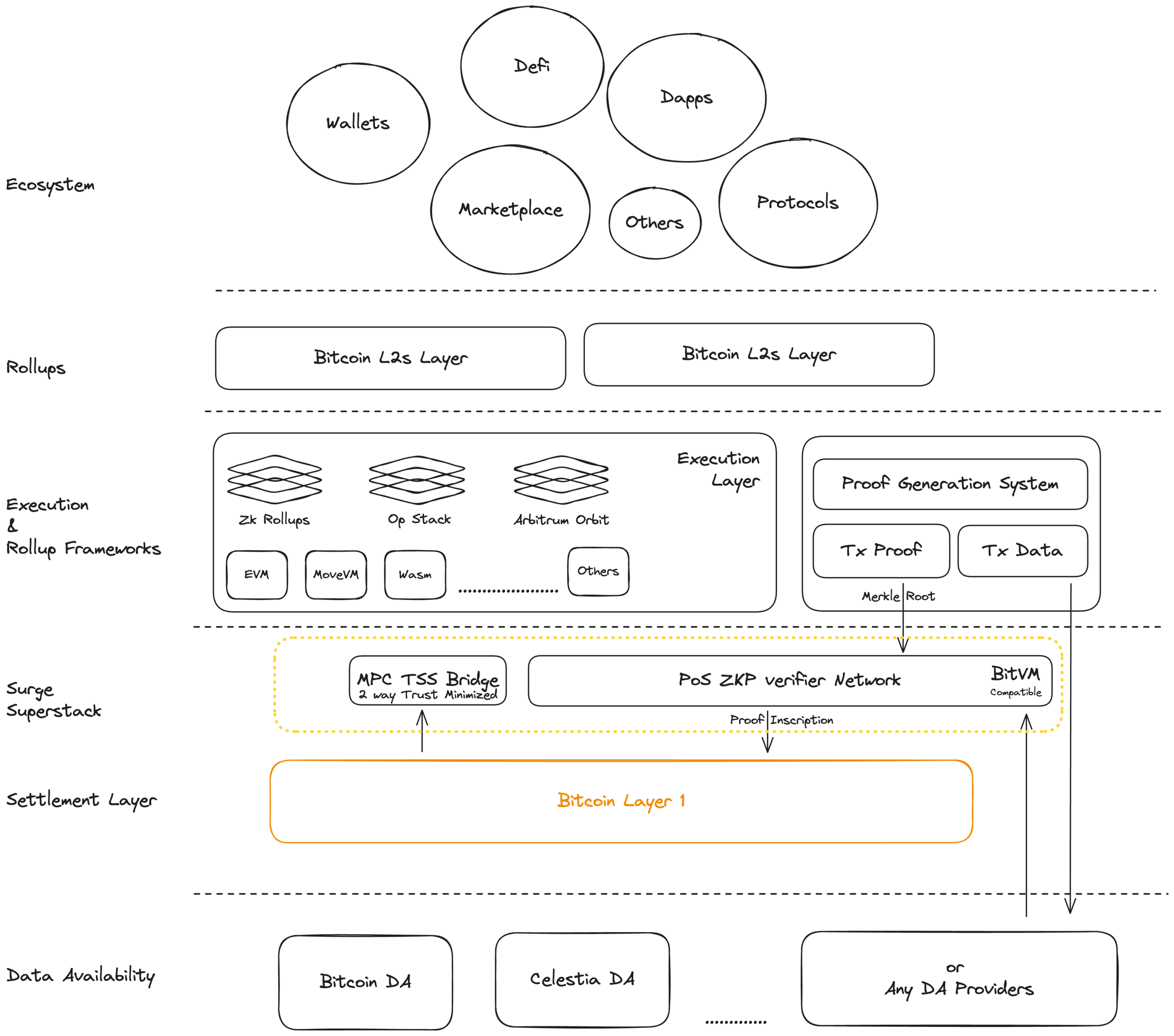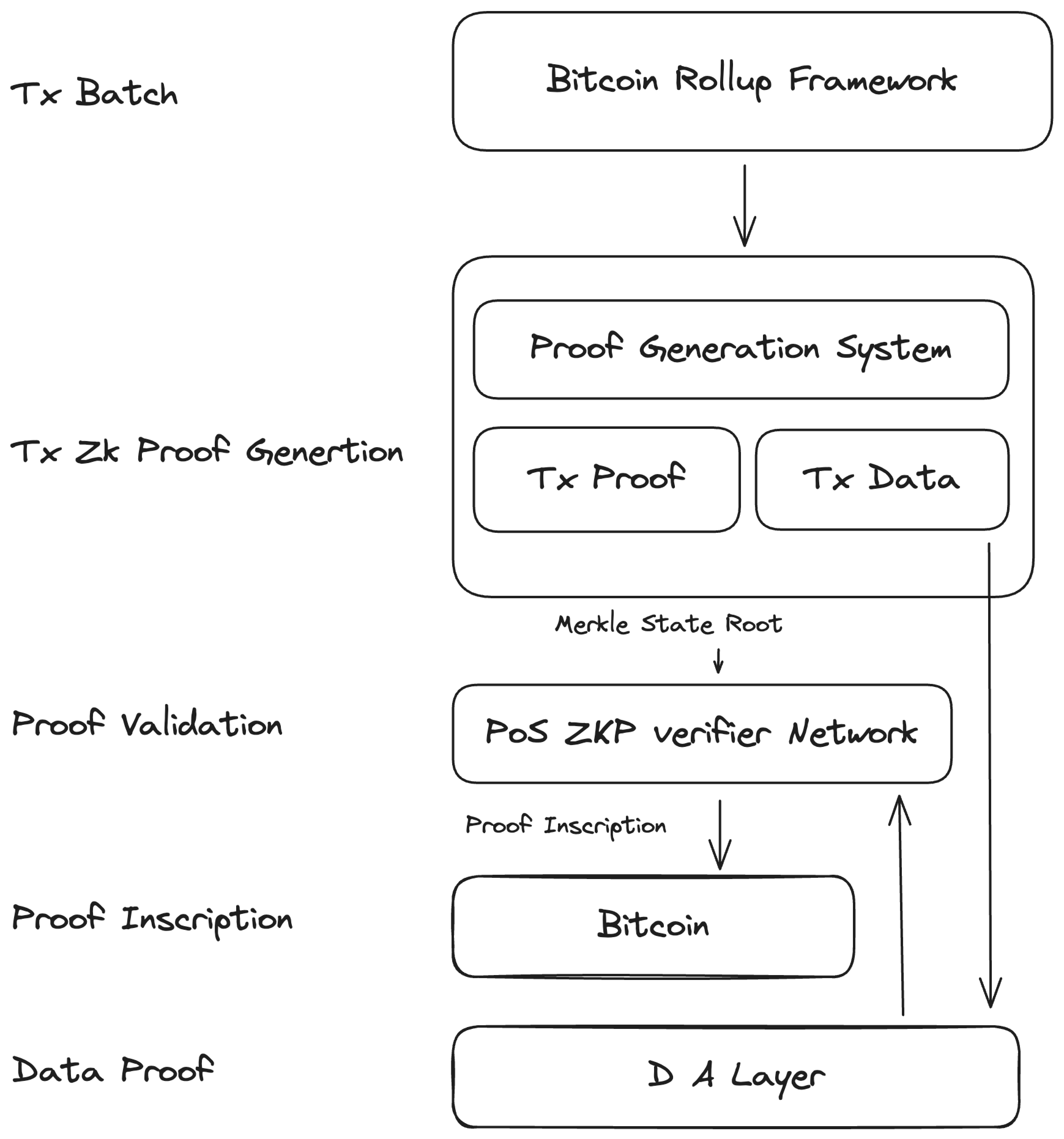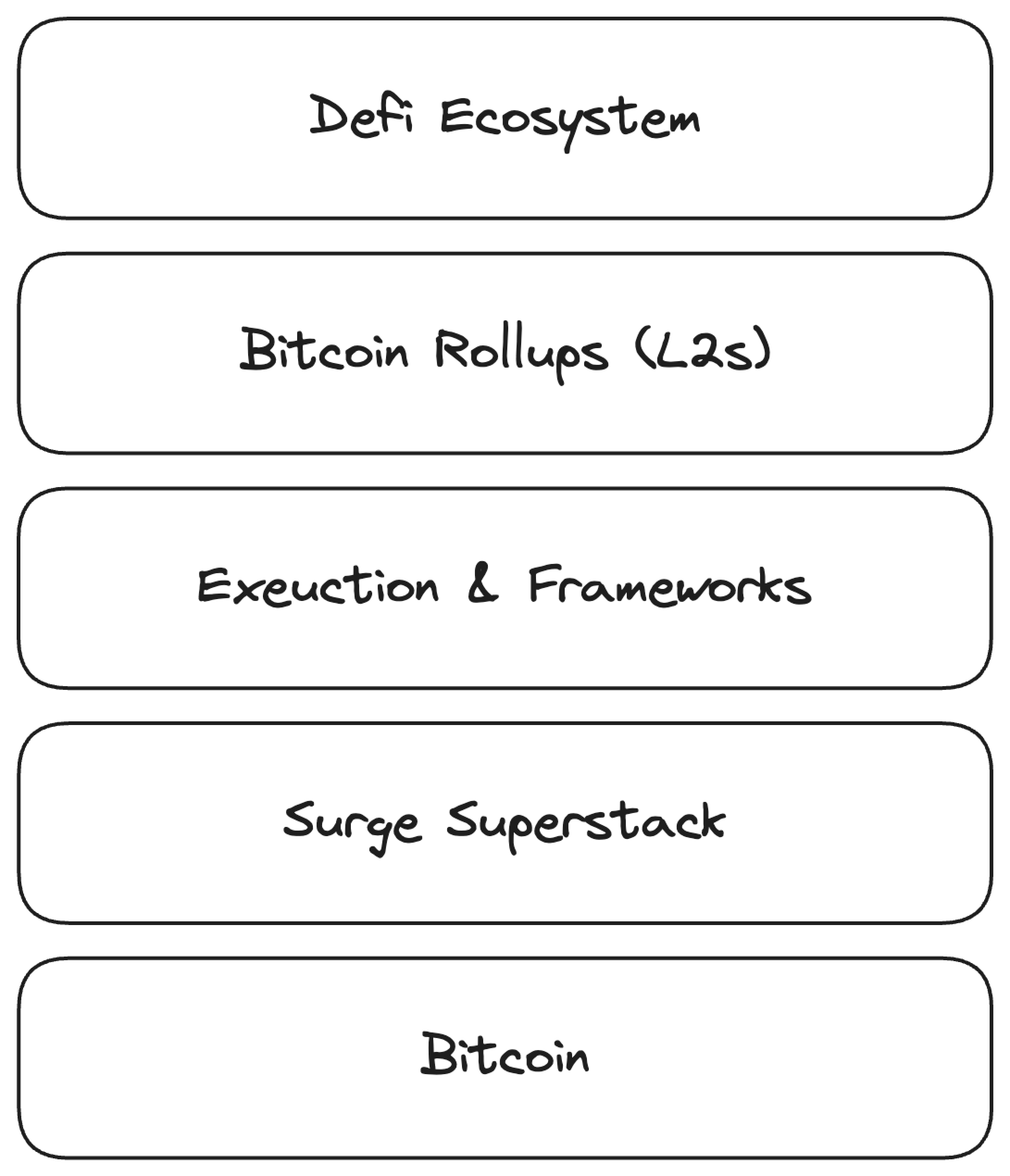Architecture
Overview
We took a modular first approach to design our architecture. This not only ensures a highly customizable and tailored end product but also heightens the security & performance of L2s built on us.
Modular Architecture Model
Surge provides a layered approach for launching Bitcoin rollups by separating the Executions, Settlement and Data Availability
-
Execution Layer: Supports multiple virtual machines (VMs) including EVM and MoveVM, allowing developers to build on VM of their choice.
-
Settlement Layer: Manages transaction finalization using a robust zero knowledge proofs, enabling for fast settlements.
-
Data Layer: Maintains data availability for the chain and data integrity, crucial for transparent operations across the platform.

Ecosystem Tooling
By allowing users to build over any VM, you have the added benefit of existing tooling and tooling Surge provides for dApps, enabling them to easily integrate and migrate to Bitcoin L2s to be available in the Bitcoin ecosystem
Execution & Frameworks
Out of the box, we plan on supporting multiple VMs like EVM, MoveVM., with planned extensions to other VMs for enhanced flexibility. This also, lets us build on top of any rollup framework like OPStack or Arbitrum Orbit and transactions are batched via our modular framework generating ZK proofs and eventually settling on Bitcoin.
Surge Superstack
Our proprietary Surge Superstack layer acts as an intermediary that sits on top of bitcoin. Superstack is a PoS protocol-based layer which secures the network and facilitates the proof verification of transactions. Superstack accepts the ZK proofs from the execution layers and pushes the transaction data to the DA layer and verified Merkle state hash to the Bitcoin L1 layer through inscriptions. By inscribing the data on the Bitcoin we are inheriting the security of Bitcoin.

Superstack also contains MPC TSS-based network nodes for bridging the assets from Bitcoin to rollups.
Bitcoin Settlement
As our proofs are directly inscribed onto Bitcoin L1, they can be verified by anyone operating a Bitcoin node. By doing so, we leverage the inherent security of Bitcoin to ensure the integrity of these proofs once they are settled on the blockchain. Our ultimate goal is to integrate verification directly within the Bitcoin layer, fostering significant innovation and enhancing the robustness of this process.
Data Availability
Surge offers multiple Data Availability (DA) layer options to suit different requirements and cost considerations:
-
Native Bitcoin DAs: Options like Nubit for those preferring integration closely tied to Bitcoin.
-
Non-native DA Layers: Alternatives like Avail, Eigen DA, and Celestia DA, offer flexibility and scalability.
Architecture Layers
Bitcoin layers have evolved to encompass a comprehensive suite of solutions, including Layer 2 (L2) for scaling, and Layer 3 (L3) for application-specific functionalities, alongside Data and Application layers. This structure draws inspiration from Ethereum's layered architecture but is uniquely tailored to leverage Bitcoin's robust security and decentralization features.

-
Layer 2 (L2) Scaling Solutions: Aimed at enhancing Bitcoin transaction throughput and reducing latency. L2 solutions like Lightning Network, sidechains, and Rollup-as-a-Service (RaaS) platforms are pivotal in achieving this goal.
-
Layer 3 (L3) and Beyond: Focuses on providing application-specific functionalities, enabling developers to create bespoke solutions for DApps, marketplaces, and more, all while leveraging the underlying security and efficiency of L2 solutions.
-
Data Layer: Ensures data availability and integrity, serving as a critical component for maintaining transparent and trustless operations across all layers.

